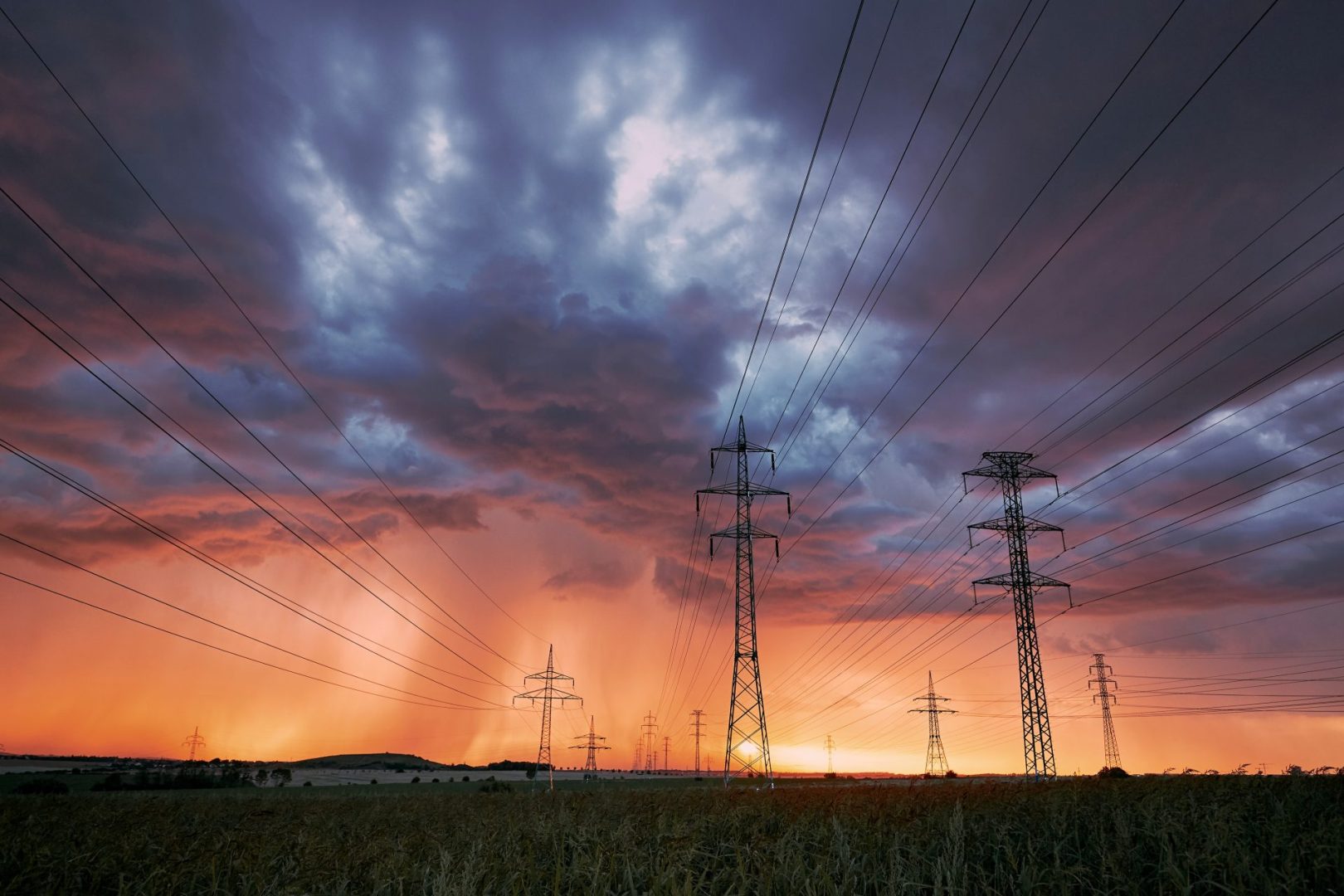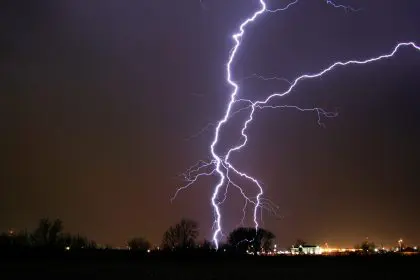New Jersey residents faced a terrifying combination of extreme heat and widespread power failures as a brutal heat wave continued battering the Garden State, leaving more than 4,000 people without electricity during some of the most dangerous weather conditions of the summer. The crisis unfolded as temperatures soared to record-breaking levels, creating a perfect storm of increased energy demand and stressed electrical infrastructure that pushed utility systems beyond their limits.
The power crisis represents a significant improvement from the previous day’s catastrophic situation, when more than 30,000 residents found themselves without air conditioning, refrigeration, and other essential electrical services during the height of the heat emergency. Recovery crews worked around the clock to restore service, demonstrating the critical importance of electrical infrastructure during extreme weather events that are becoming increasingly common across the northeastern United States.
Utility officials mobilized extensive resources to address the widespread outages, recognizing that power failures during extreme heat events can quickly become life-threatening situations for vulnerable populations including elderly residents, young children, and individuals with chronic health conditions. The rapid response effort highlighted both the fragility of electrical systems during peak demand periods and the heroic efforts of utility workers who risked their own safety to restore power in dangerous conditions.
Geographic distribution reveals widespread infrastructure stress
The outage pattern across New Jersey revealed the broad scope of infrastructure challenges facing the state’s electrical grid during extreme weather events. Northern New Jersey bore a significant portion of the burden, with multiple counties experiencing substantial power disruptions that affected thousands of residents and businesses throughout the region.
Bergen County recorded 160 customers without power as of early morning hours, representing a concentrated area of electrical system failure that required immediate attention from utility crews. The outages in this densely populated area affected residential neighborhoods, commercial districts, and essential services that depend on reliable electrical supply for normal operations.
Passaic County experienced similar challenges with 160 customers lacking electrical service, demonstrating that infrastructure stress extended across multiple jurisdictions and required coordinated response efforts between utility companies and local emergency management agencies. The geographic spread of outages indicated systemic challenges rather than isolated equipment failures.
Essex County faced the most severe single-county impact with 1,241 customers without power, representing a substantial concentration of electrical system failures that demanded priority attention from restoration crews. The large number of affected customers in Essex County suggested either major equipment failures or cascading system problems that created widespread service disruptions.
Union County initially experienced the most devastating outages, with nearly 2,316 customers still without power despite significant recovery efforts that had reduced the number from over 12,000 the previous day. This dramatic improvement demonstrated the effectiveness of utility response efforts while highlighting the severity of the initial crisis that affected tens of thousands of residents.
Utility response efforts demonstrate system resilience and challenges
PSE&G’s comprehensive outage tracking system provided real-time visibility into the scope and scale of power failures across their service territory, enabling both utility officials and residents to monitor restoration progress and plan accordingly. The detailed county-by-county breakdown revealed the complexity of managing electrical infrastructure across diverse geographic areas with varying population densities and system configurations.
The utility company’s ability to reduce total outages from over 30,000 to approximately 4,225 within 24 hours demonstrated both the scale of resources available for emergency response and the dedication of utility workers who performed dangerous restoration work during extreme heat conditions. This recovery effort required careful coordination of personnel, equipment, and materials across multiple work sites simultaneously.
Restoration priorities during heat emergencies typically focus on critical infrastructure including hospitals, emergency services, and cooling centers that serve vulnerable populations. Utility crews must balance the need for rapid restoration with safety considerations for workers operating in dangerous heat conditions that can lead to heat exhaustion, dehydration, and other serious health risks.
The geographic distribution of outages required utility companies to deploy crews across wide areas, stretching resources and complicating logistics for equipment transportation, parts delivery, and workforce coordination. These challenges demonstrate the complexity of maintaining electrical infrastructure across large service territories during extreme weather events.
Emergency response protocols developed by utility companies include provisions for mutual aid agreements with other utilities, enabling rapid deployment of additional crews and equipment from unaffected regions. These cooperative arrangements prove essential during large-scale emergencies that exceed local utility capacity for rapid restoration.
Heat wave creates perfect storm for electrical system stress
The combination of record-breaking temperatures and widespread power outages created particularly dangerous conditions for New Jersey residents, as the very weather conditions that increased electrical demand also compromised the systems needed to deliver power. Air conditioning systems, which become essential for health and safety during extreme heat, place enormous strain on electrical grids precisely when infrastructure faces additional stress from high ambient temperatures.
Electrical transformers, power lines, and other critical infrastructure components operate less efficiently in extreme heat, creating a cascading effect where increased demand coincides with reduced system capacity. This phenomenon explains why power outages become more common during heat waves, as electrical systems struggle to meet peak demand while operating under adverse conditions.
The timing of peak electrical demand during heat waves typically coincides with late afternoon and early evening hours when temperatures reach their highest levels and residential air conditioning use peaks. This creates predictable stress points that utility companies monitor closely, but extreme weather events can push demand beyond anticipated levels and overwhelm even well-prepared systems.
Industrial and commercial electrical users also contribute to peak demand during heat waves, as businesses increase cooling system usage to maintain safe working conditions and protect temperature-sensitive equipment and inventory. The cumulative effect of residential, commercial, and industrial demand can quickly exceed available generating capacity and transmission capability.
Community impact extends beyond mere inconvenience
Power outages during extreme heat events create serious health and safety risks that extend far beyond typical inconveniences associated with electrical service interruptions. Vulnerable populations including elderly residents, individuals with chronic health conditions, and families with young children face potentially life-threatening situations when air conditioning and refrigeration systems fail during dangerous heat conditions.
Emergency cooling centers operated by local governments and community organizations become crucial resources during combined heat and power emergencies, providing air-conditioned spaces where residents can seek relief from dangerous temperatures. These facilities require coordination between utility companies, emergency management agencies, and community service organizations to ensure adequate capacity and accessibility.
Food safety becomes a critical concern during extended power outages in hot weather, as refrigeration failures can lead to spoilage of perishable items and potential foodborne illness risks. Residents must carefully monitor food storage conditions and dispose of potentially unsafe items, creating additional financial burdens for families already struggling with extreme weather impacts.
Medical equipment that requires electrical power, including oxygen concentrators, CPAP machines, and medication refrigeration systems, creates urgent needs during power outages. Healthcare providers and emergency services must coordinate to ensure continuity of care for patients who depend on electrically powered medical devices for their health and survival.
Small businesses face significant challenges during power outages in extreme heat, as inventory spoilage, equipment damage, and inability to serve customers can create substantial financial losses. Restaurants, grocery stores, and other food service establishments face particularly severe impacts when refrigeration systems fail during hot weather conditions.
Recovery efforts continue amid ongoing weather challenges
Utility crews continued working in dangerous heat conditions to restore power to remaining customers, demonstrating the dedication and professionalism of workers who risk their own health and safety to provide essential services during emergencies. These restoration efforts require careful attention to worker safety protocols, including frequent breaks, hydration monitoring, and rotation of personnel to prevent heat-related illnesses.
The complexity of electrical system restoration during extreme heat requires careful planning and execution to prevent additional system failures that could affect customers who have already had their power restored. Utility engineers must balance the need for rapid restoration with system stability considerations that ensure long-term reliability of electrical infrastructure.
Advanced weather monitoring systems enable utility companies to anticipate potential system stress and pre-position crews and equipment in areas where outages are most likely to occur. These predictive capabilities improve response times and resource allocation, but extreme weather events can still overwhelm even well-prepared systems and response capabilities.
Coordination between utility companies, emergency management agencies, and local governments becomes essential during large-scale power emergencies, ensuring that resources are deployed effectively and that public safety needs receive appropriate priority. These partnerships prove crucial for managing complex emergencies that affect multiple jurisdictions and require diverse response capabilities.

















